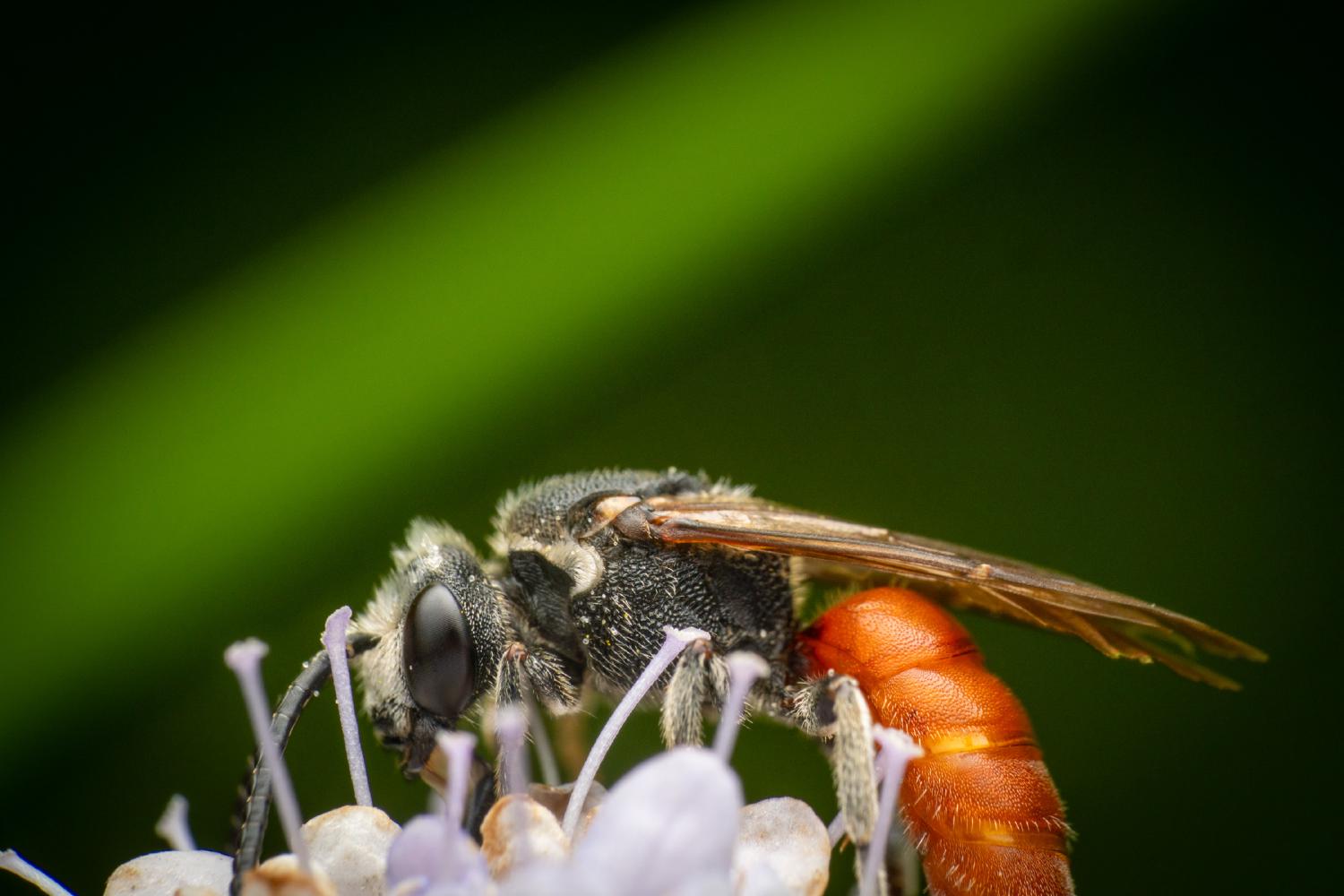White-lipped Blood Bee
Lat. “Sphecodes albilabris“
species
of family
“Sweat Bees“
1 species
The bee species Sphecodes albilabris is approximately 11-14 mm in length and has a transpalaearctic distribution. It can be found in various regions including North Africa, Europe, Central Asia, Siberia, Far East, and India. The habitats where it is commonly found are inland dunes, sand fields, grasslands, and flood dams. The species flies from March to October, with females flying from March to August and males from July to October. It is a parasite of other bee species, including Colletes cunicularius, Halictus sexcinctus, Halictus quadricinctus, and Melitturga clavicornis. The etymology of the species name comes from the Latin words for “white” and “lip,” referring to the snow-white hairy lower half of the male’s face. It is also known by the synonym Sphecodes fuscipennis.
Description
The length of the bee is 11–14 mm.
Range
This species shows a transpalaearctic distribution. It occurs in North Africa from Morocco to Egypt. In Eurasia it occurs from Portugal via Europe, Asia Minor, Levant, Caucasus, Central Asia and Siberia to the Pacific coast of the Far East, reaches the oriental fauna region in northwest India (Uttar Pradesh); north to 60 ° N in Norway (Hønefoss), 62.5 ° N in Sweden (Västernorrland), 63.5 ° N in Finland (North Karelia), in Russia to Karelia and Kirov; south to Sicily, Crete, Cyprus and Israel. The ssp. rubripes SPINOLA, 1838 occurs in North Africa, Levante, Iberia including the Balearic Islands, Sardinia and Cyprus.
Habitat
Inland dunes, drifting sand fields, sand pits, grasslands, flood dams, mainly in sand but also loess areas. From the lowlands to the montane elevation.
Ecology
It flies from March to October. Females are flying from March to August, males from July to October.The larvae of this species are parasites of Colletes cunicularius. The species was also observed in the nests of Halictus sexcinctus, Halictus quadricinctus and Melitturga clavicornis.
Etymology
From Latin “albus” = “white” and “labrum” = “lip”; because of the snow-white hairy lower half of the face of the male.
Taxonomy
Synonyms: Sphecodes fuscipennis (GERMAR, 1819)
External links
Wildebijen.nl (in Dutch) Sphecodes albilabris at Fauna Europaea
Ancestry Graph
Further Information
Copyright

This article uses material from the Wikipedia article Sphecodes albilabris the free encyclopedia Wikipedia which is released under Creative Commons Attribution-ShareAlike 4.0 International License). On Wikipedia a list of authors is available.
